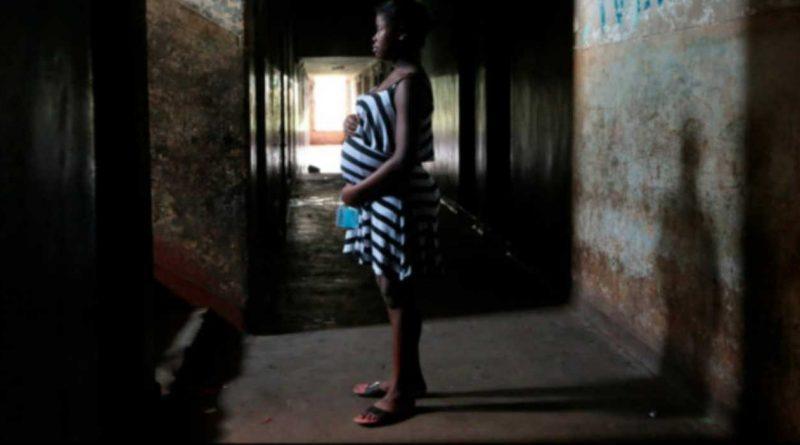Girls extremely vulnerable to climate change and child marriage to rise 33% by 2050 – Chimaobi Agwu
According to new Save the Children estimates issued on the eve of the International Day of the Girl, the number of girls who are extremely vulnerable to the twin blows of climate change and child marriage is expected to rise 33% to nearly 40 million by the year 2050.
Around two-thirds of child marriages occur in areas with higher-than-average climatic risks, according to a recent Save the Children research titled “Girls at the Center of the Storm: Her Planet, Her Future, Her Solutions.”
The top 10 child-marriage-climate hotspot countries, which are the countries with the highest likelihood that a girl will marry as a child and experience life-altering climate disasters, are currently home to an estimated 29.9 million teenage girls.
By 2050, this number is anticipated to rise to 39.9 million, with these hotspot nations having some of the world’s youngest and fastest-growing populations.
All 10 of the top countries are in sub-Saharan Africa, where the effects of the climate catastrophe and child marriage have combined to create emergency hotspots for girls’ rights in Bangladesh and elsewhere. The hardest hit countries include Guinea, Chad, and Central African Republic. These nations have disproportionately more severe and frequent extreme weather occurrences, but they are also frequently plagued by conflict, extreme poverty, gender inequality, and famine.
When a man in Sierra Leone indicated interest in marrying Kpemeh*, she was 12 years old. Her parents were under financial pressure to approve the marriage because they were subsistence farmers who were affected by the climatic catastrophe. Kpemeh was helped by Save the Children to avoid the marriage, and she is now a fervent supporter of girls’ rights to complete their education in her community.
“Poverty is a factor in [child marriage]. If a man has money, he could harvest, process, and sell palm fruits, for instance, and give the [girl’s] family some palm oil to help support them.
“A man approached me about getting married, but I said no. He then went to my parents and told them he wanted to marry me. I stated that I was attending school. They advised you to get married in response. Will you consent to the man if he says he will assist you?
“Our parents are dependent on farming, but the climate has changed. Rain does not always fall on schedule. It rains both throughout the rainy and dry seasons, as well as during the non-rainy and dry seasons.
A girl’s life is negatively impacted by early marriage. Young brides are much less likely to complete their education, which has long-term financial repercussions. They are more vulnerable to physical and sexual assault since they are frequently marginalized. Additionally, child brides are more likely to experience life-threatening difficulties during pregnancy and childbirth.
Governments, NGOs, the UN, and corporations must acknowledge the climate crisis—which includes the present hunger crisis—as an emergency for girls’ rights, according to Save the Children International CEO Inger Ashing. She uttered:
“This research demonstrates once more how seriously the climate issue is endangering children’s rights, especially those of girls.
“Girls face genuine risks. Girls are particularly vulnerable to sexual assault and harassment in the tumultuous days following a tragedy because of congestion and a lack of secure services. It’s the pressure to get married before turning 18 as a result of families struggling to feed their members due to years of drought and having to make difficult decisions about who to feed.
The lives and futures of girls are already being impacted by the global climate crisis. Nevertheless, despite these disparate effects on girls, fewer than 2% of national climate plans around the world specifically address girls and take their needs and participation into account. In the face of these difficulties, girls are displaying incredible resiliency, yet their demands and answers are rarely mentioned in conversations about the planet they will inherit. This must change.
“Investing quickly and effectively is essential for climate change adaptation, and it is crucial for children, especially girls, who are especially vulnerable to both immediate and long-term effects. Children are practically ignored by current expenditures; this must change.
In several of these nations, girls are currently battling historic levels of hunger.
At least 49 million people worldwide, including girls and their families, are on the verge of starvation and unable to learn or grow as a result of prolonged droughts and the war in Ukraine, which have combined to produce a food crisis that is unprecedented in scope and intensity.v
Girls at the center of the storm: Her planet, her future, her solutions can be read here. Our 2022 report, Generation Hope: 2.4 billion reasons to end the world’s inequality and climate disaster, is available here. Born into the Climate Crisis: A 2021 Report with the Vrije Universiteit Brussel is available here.




